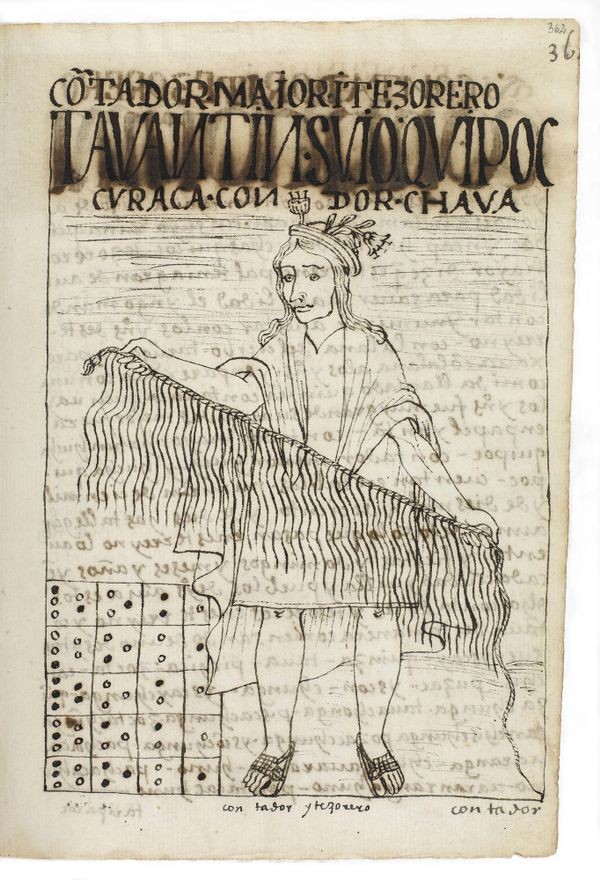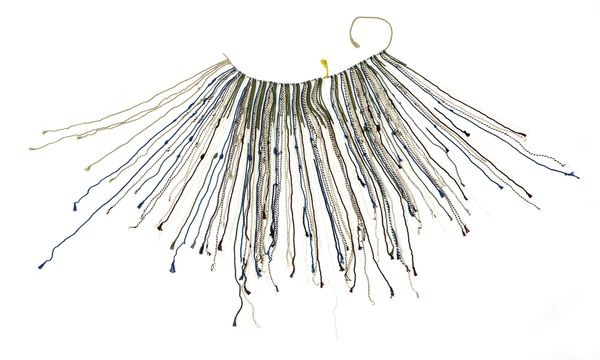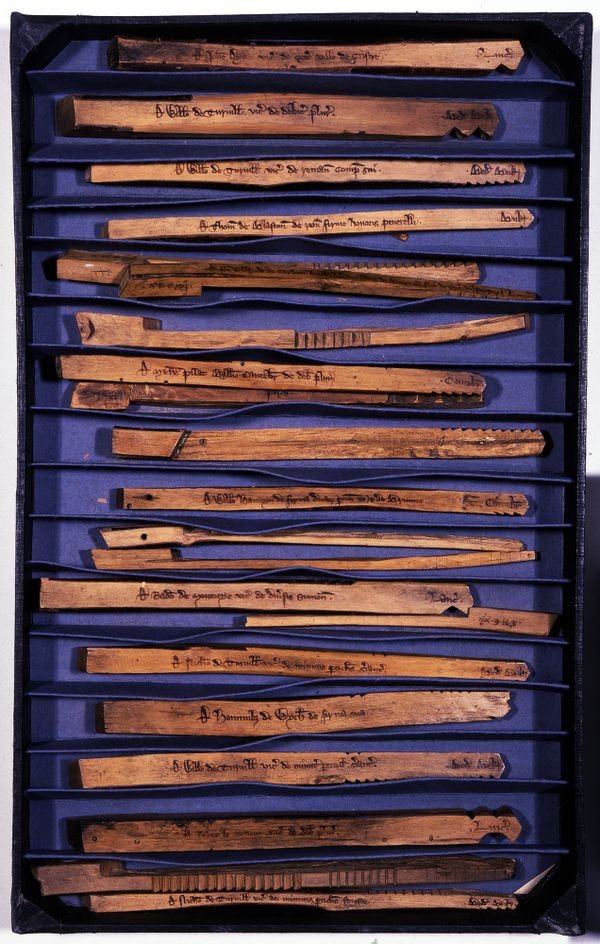Preserving Information
Incan official with quipu
An early 17th century chronicle by a Quechua author shows a “Quipucamayac” (Quipu maker) holding a large, complex quipu.
Preserving Information
Human history is built on memories. Civilizations flourish by preserving and sharing what people have previously experienced and learned.
Centuries ago, oral traditions began yielding to other ways of recording information, from tally sticks to writing. Today, cheap and abundant digital memory—able to hold all of history’s accumulated information—has changed what we can remember and how we use it.
The Quipu
The Inca Empire spawned a vast bureaucracy sending and receiving information, from tax records to census data. Much of it traveled via the quipu, an assembly of knotted, colored cords encoding the data.
Quipucamayu (quipu makers), specialists responsible for encoding and decoding the information, were the scribes of their day.
Reproduction Quipu
Quipu are knotted textile record-keeping devices used by the Incans (1400 CE to 1532). This reproduction is of a Quipu from Pachacamac, an important ritual center on the coast of Peru.
View Artifact DetailTally Sticks
Roughly 30,000 years ago, people carved information on “tally sticks.” They were still doing it 100 years ago, making tally sticks among history’s most enduring storage devices.
In England, from the 13th-19th centuries, notched sticks recorded financial transactions. Notch sizes indicated currency units. Splitting the stick lengthwise gave each party a “receipt.”
Tally sticks
When split to create a receipt, the thicker piece of a tally stick was the “stock,” kept by the “stock holder” — the origin of today’s financial term.
View Artifact Detail

